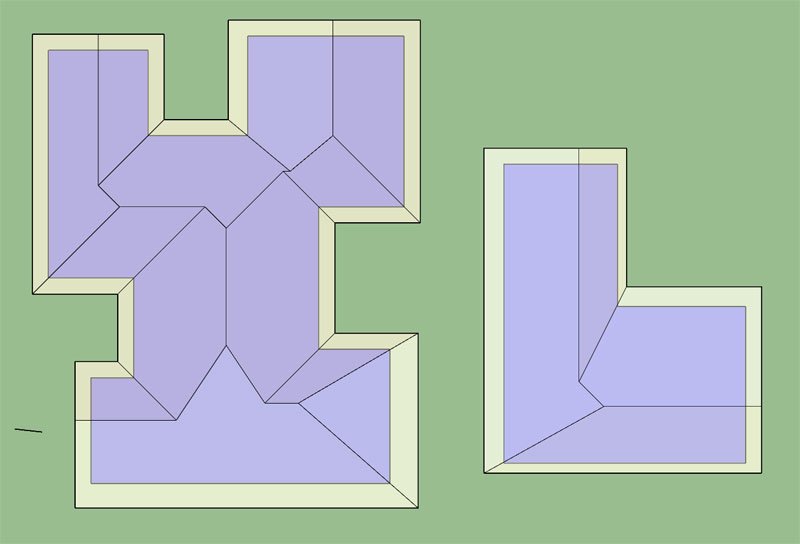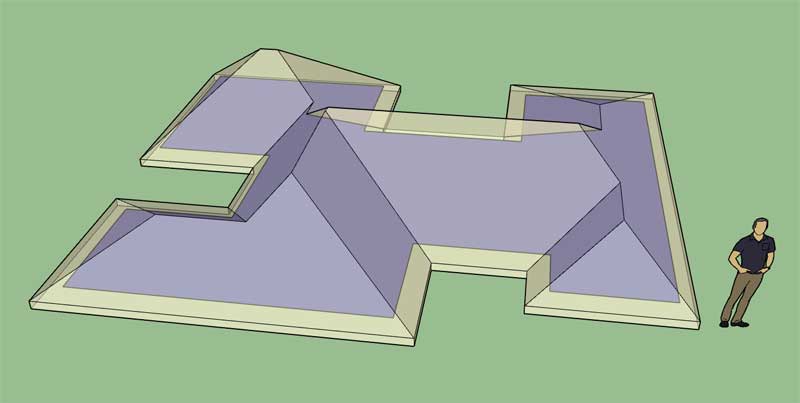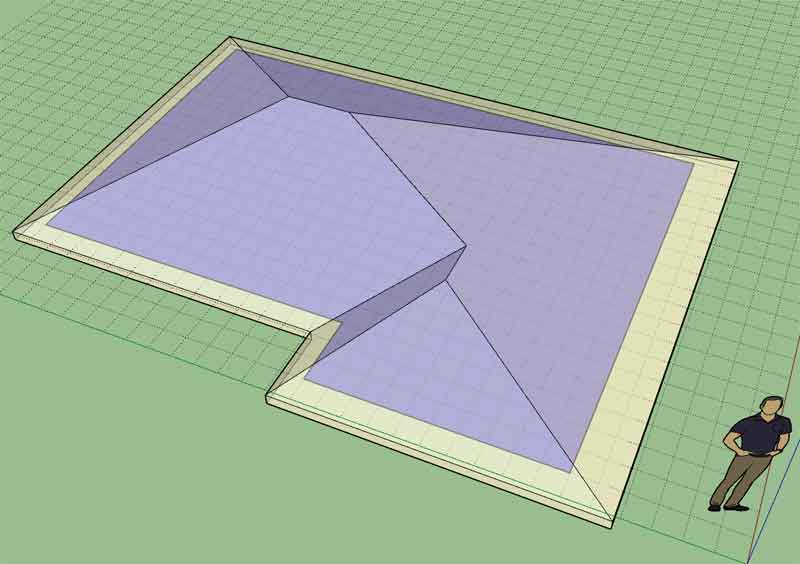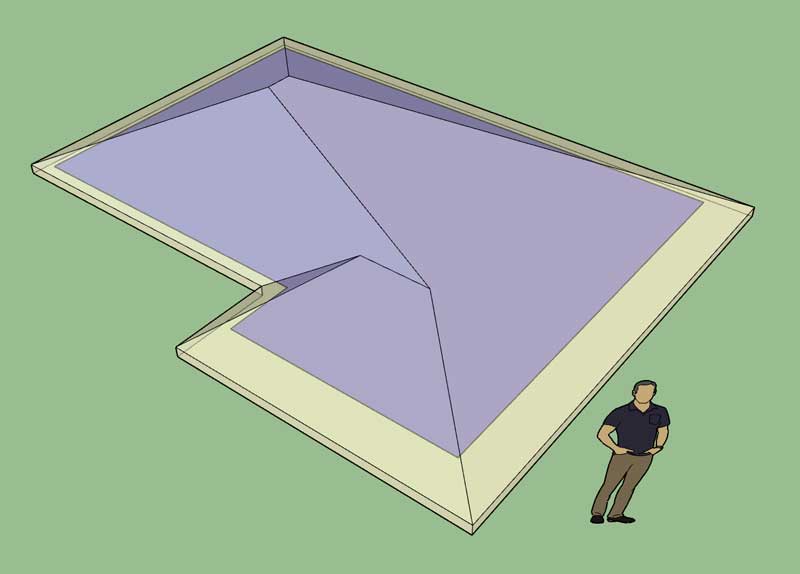First look at dutch gable complex roofs:
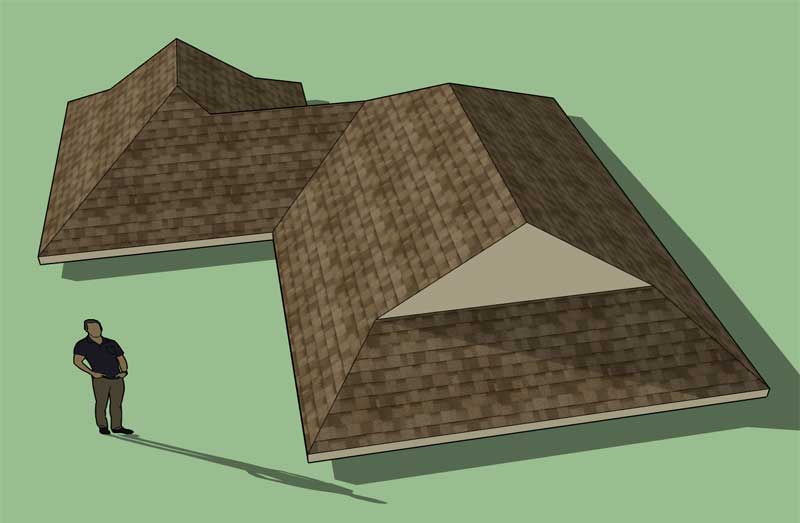
(textures added to roof primitive for effect)
After I setup the system for the half hip this one fell out without too much trouble.
View model here:
https://3dwarehouse.sketchup.com/model/6f5908e1-189d-420e-8675-78cbe32ef522/Dutch-Gable-Complex-Roof
Now it is time to move on to the sheathing and cladding, but first I need to add in some options for battens and cross battens.

(textures added to roof primitive for effect)
After I setup the system for the half hip this one fell out without too much trouble.
View model here:
https://3dwarehouse.sketchup.com/model/6f5908e1-189d-420e-8675-78cbe32ef522/Dutch-Gable-Complex-Roof
Now it is time to move on to the sheathing and cladding, but first I need to add in some options for battens and cross battens.



